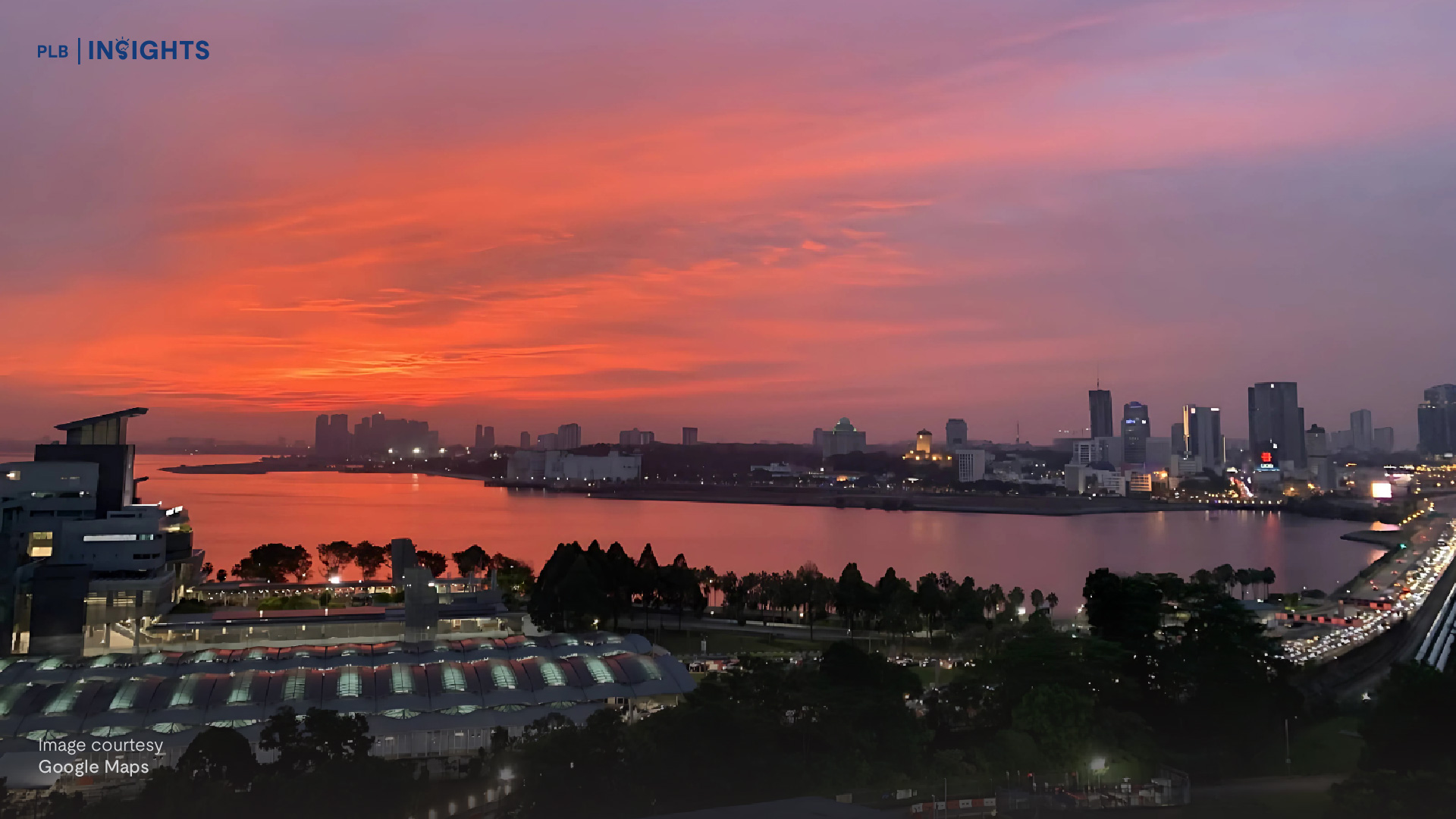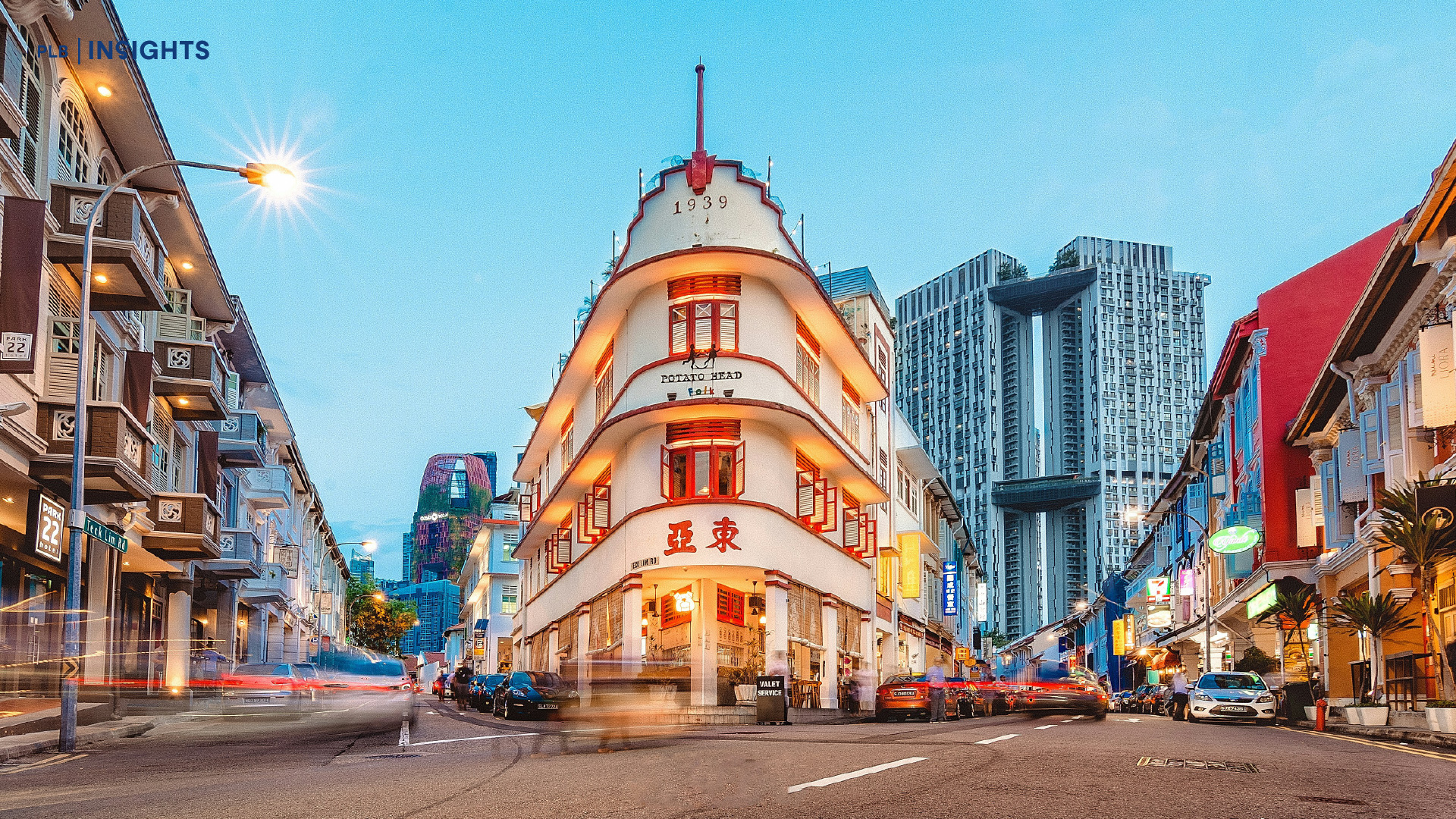
The electric charge is gearing up fast and taking our country by a storm. We are not here to change the world, but if we are here to stay for a long time, then playing a part in sustainable development is crucial as part of our role as woke and environmentally cautious citizens.
The Green Plan 2030 is a comprehensive guide which is also a multi-pronged approach to address the issue of climate change and global warming on a bigger, national scale and higher note. This is not Singapore’s first sustainability campaign. In fact, we have already been in this game for decades. Plans for a greener community is definitely not new and unheard of, only that this time, it is of a greater scale.
This plan was first rolled out to the public in the beginning of the year, back in February – and its main agenda is to shape the future of Singapore’s movement towards more sustainable living with a greener and faster transition. The biggest call for action in this sustainable blueprint is the freezing of the internal combustion engine (ICE) vehicles population in the country. With these engines cooled, this will subsequently see the rise of electric vehicles (EVs) and how they will potentially influence the change in the Singapore automotive industry. EVs may be in a league of their own, setting new heights for the future of automotive. But if they are here to stay, then they would ultimately form a robust ecosystem, which, are they really what they are marketed to be? A call to action for more sustainable living? Are they really carbon neutral and as green as they claim to be?
The biggest flaw in the ICE vehicle industry that is contributing to the effects of climate change would be the carbon footprint and emissions that it is associated with. Thermal heat that is produced from such road air pollution is one of the main sources of atmospheric pollution, with the amount of carbon emissions that it produces that increases the urban heat. Industries and power stations are among the rest of the main contributing sources. However, it is not up to us to forgo any of these essential functions as they are the fundamental sectors to keep our economy running.
With the Green Plan 2030 unravelled and execution in progress, the adoption of greener vehicles of lower carbon emissions are also sped up as government officials take to it as a setting of example for the population. As part of the fast-track national initiatives, the public sector is seeing civil servants ramp up on their efforts in the big push towards sustainable living, setting by example as they themselves turn the greener power switch. All government cars are to be running on the greener battery-powered engine by 2035, which is five years ahead of the said goal of 2040. To preserve the nation as a Green Singapore to other Asian counterparts or even to the worldwide audience, the government has constructed five pillars of targets for the country, namely – A City in Nature, Energy Reset, Sustainable Living, Green Economy and a Resilient Future for the next generations. This is a pledge to our future generations that we will do our part in providing a sustainable Singapore for a long time to come. Everyone has a role to play, and for the residents, their role is to simply recognise that preserving the environment and its sustainability is an all for one type of ball game. They just need to make the eco switch work.
EVs have been around for decades or even generations ago but what was the game changer in the automobile industry was when Elon Musk took the prototype and gave it an advanced, more tech-savvy twist, repackaging it into a whole new look that is very much more appealing to the eyes and wallet. Teslas marked the start of a new century, with many other car manufacturers following in its footsteps. The industry was gearing towards a more sustainable environment with much retooling and R&D research on creating the most energy-efficient car battery on the market. But plug-in cars still have their own set of environmental impacts, though not communicated directly through the pipelines. Should the relevant authorities really be pushing everyone on board this EV bandwagon?

As the Little Red Dot, with the rank of 27th place out of 143 countries in terms of the emissions per capita, shows just how much efforts need to be made and ramped up for the sustainable development of our country. In terms of scale, Singapore is the smallest country in the world and yet our urbanisation rate is bringing about a more than proportionate increase in the scale of carbon emissions.
Apart from the ongoing debates about the portability of the charging stations and ports, other environmental considerations are also actively being discussed by communities.There has been a lot of controversy about the production of EVs, which also happens to be our main focus for this article. Should Singapore really encourage the adoption of EV more or will it bring more harm than good to the welfare of the environment? Before we get swept away by the attractive sales figures, price tags and greener perks that come with an EV, we will trek through the energy usage and production process of an EV, what are the intermediate steps and goods that are manufactured in order to put together the final product (the EV duh) and how environmentally friendly they actually are. Let’s dive right in.
A tale of two vehicles:
Comparing the environmental impact that is brought about by both types of vehicles – ICE and EV. Before we put complete brakes on the production of ICE vehicles, it is important to weigh the factors between the two and why EVs are potentially more environmentally friendly (or not) than the pioneering batch of automotive motor vehicles.
ICE vehicles run on diesel or petrol fuel. What is the difference in terms of environmental impacts?
So what’s the difference between the two? ICE vehicles whose main powering ingredient that runs the engine is either diesel or fuel, which then relies on the transformation process of turning chemical potential energy (stored energy) into kinetic energy (movement), to power up the engine. Through this transformation process there are chemical reactions happening within the mechanism of the engine which releases the toxin gases (or greenhouse gases) into the atmosphere while it is running. On the other hand, for EVs, even though they have stored energy in the batteries, electric vehicles release the energy electrochemically without any form of internal combustion. There will be no fuel being burned and hence no air pollution (or minimum) will happen while driving an EV. In this sense, they are definitely more efficient than ICE vehicles. But are we going to base the success of EVs on this supposed fact? Or are there more to analyse? Read on to find out more.
The electric grid:
Supposedly, an EV runs on cleaner energy, energy from the grid. In Singapore, our main sources of electricity comes from burning natural gases, while a small percentage comes from the more sustainable production of solar voltaic panels. With the opening of the latest Tengeh reservoir’s very own large-scale solar farm, which is the size of 45 football fields, it has enough power generated for 166,000 HDB homes on an annual basis. It is also projected that by 2025, solar energy will be able to provide for 4% of our local energy demand. Singapore’s solar density has grown about seven times but given our land scarcity, there is a limit as to how much more solar farms we can build out of the 728.6 km² space of viable land that we have.
As the EV population grows, so would the demand for electricity. By then, would the grid be able to generate enough supply for all to use? Transport Minister Ong Ye Kung has reported that if Singapore successfully makes the switch by 2040 and has all ICE vehicles phased out, with the EV market fully operational, this would increase our current energy demand by about 8 to 16 per cent, which would only be achievable if EV owners are not insistent on having their cars fast-charged and are willing to only charge through the night on a lower energy supply grid. This in future probably would become a persistent issue, which can only be solved by burning more fossil fuels or natural gases, where carbon dioxide and other greenhouse harmful gases will be released into the atmosphere. This will persist until a more sustainable innovation is being invented for sustainable energy.
Furthermore, Singapore’s grid infrastructure is not able to support the deployment of an abundance of fast chargers planted around the island city-state. Instead, the authorities are pitching for slow chargers. Fast chargers take about 10 to 30 minutes for the EV to charge up while slow chargers can take from three to possibly even 12 hours of charging time.
In simpler terms, EVs merely shift the carbon emissions from the exhaust pipe of the vehicle to the factories and power stations that generate electricity. Out of sight, out of mind? Does this really make EVs a greener initiative? In an interview with Chan Chun Sing, our minister for Trade and Industry, he has highlighted the probable fact that our main source of energy will still come from the burning of fossil fuels, natural gas, for the next 50 years, given that Singapore’s move towards the production of more sustainable energy is still relatively slow.
High-charged batteries:
Another hurdle that the EV market faces is the production of the lithium-ion battery that powers the motorcar itself. Replacing conventional rechargeable batteries with lithium-ion batteries will allow for the driving range of EVs to stand from 320 km to even 480 km. Orders for these batteries now come in big chunks of millions and the demand for it will only keep increasing as people decide to activate the green switch. When analysing the battery, we should be more concerned about the type of materials used. Materials that are used for the batteries mainly include that of lithium, nickel, aluminium, graphite and cobalt. They are primarily used in the cathode of these batteries and are the heart of the vehicle itself. M
anufacturers and brands are constantly in a collaboration in finding the most cost-effective yet ensuring high deliverance products for their consumers. From the few materials that are listed, the cathodes in the batteries are defined mainly by nickel. Nickel is considerably the one earth metal more commonly used by the automotive industry as it is able to store more energy in batteries at a lower cost as compared to the other materials. Here comes the but though. Nickel mining often also comes with hidden environmental costs that are not seen by consumers, as this process is part of the intermediate production chain of the EV market.

How mining for nickel looks like
Extracting nickel takes place most commonly in these few countries – Canada, Indonesia, Australia, Russia and the Philippines. Even though nickel is considered the less harmful metal to be mined among others like lithium and cobalt, one cannot simply disregard the potential health impacts and environmental costs nickel mining brings. Earth metals generally all come at a cost, and reporters are most certainly always on the lookout for such negative impacts, in a rush to paint the industry in question in a dull and grim picture. Negative impacts of nickel mining include that of greenhouse gases emissions, destruction of natural habitats, contamination of water, air and soil. Not forgetting also the slag produced from the curation/refining of the material after mining. Because of the natural deep rooted nickel deposits, it is also energy consuming, making it an intensive task to extract and refine the material itself. The towns and cities located near such mine fields and refining factories will face environmental impacts that affect the air quality. An example would be that of Norilsk, where 350,000 tonnes of sulphur dioxide are produced and emitted by the factories nearby on an annual basis.
Taking on another point of view is that whilst nickel mining has its own fair share of negative contributions to the environment and health of miners and the other residents nearby being affected by such negative externalities, the after effects/ benefits of it outweigh the costs that it brings. Being a part of the EV market goes back to the primary reason why governments around the world are pledging to make this switch. EVs will bring about a significant reduction of greenhouse gas emissions in the long run. Considering that nickel batteries are part of the intermediate production process, the negative impacts that it brings will be overwritten by that of the positive externalities associated with an EV.
Although we have analysed the costs and externalities from both sides of the picture, one may still ponder on about the potential impacts that a rising EV population could have on the environment, with the increase in amount of natural gas being burnt and the amount of negative externalities it brings to residents and the environment located within the close proximity of nickel factories or mine in return for a larger surplus for the grid. Is it really worth it to invest in the grid?
As mentioned in our previous article centred around the idea of EVs in Singapore, the EV market is uncharted territory and it remains a fresh concept for many to comprehend. This fact only makes consumers more wary and uncertain of the future it can bring. Furthermore, we have already grown accustomed to the ICE population being the most prominent automotive option, not only in Singapore but also around the world. For us to immediately accept this whole new concept and make this lifestyle switch requires a big step.
Mining takes place every day across the globe, no matter how much environmental impacts it may bring about, for other productions of goods. The EV market is not the only industry that is producing all these negative externalities. What we should be focusing on instead is probably the fact that an EV brings about positive environmental impacts which may indefinitely outweigh the negative ones that are produced during the production process. Since they are already produced, what one can only do to support the movement is to purchase an EV and make up for the loss in destruction of the environment by contributing positively to it from thereon. Perhaps this is the hidden concept that we have yet to come to terms with.
We as consumers in our own country of Singapore should be more concerned about the electric grid, where the source of pollution is most prudent. We might not be directly affected by environmental impacts from the mining of materials for the battery of the EV itself, but we will definitely be exposed to the impacts of the generation of energy required to power up the electric cars. On the other hand, the one source of pollution that we should be more aware of would be the burning of natural gases to power up our electric grids. This process contributes to air pollution much more and unless we are to make a switch completely to solar energy, wind energy or any form of other renewable energy, the grid will remain a factor contributing to environmental, air pollution for the country. So even if we make the ‘cleaner’ switch, it may be true that we will not be producing as much fumes on the roads, but in a distance away at the power plants where natural gas is burnt, the environment will see to take in the negative externalities in that region.
For an example, if you are driving an electric car where 95 per cent of energy in Singapore is being generated by natural gas, while the remaining 5 per cent consists of that by coal, oil, municipal waste and solar energy. You are probably contributing a lot more CO2 harmful gas into the atmosphere as compared to if you are driving one in another country, where electricity is mainly produced by hydroelectric dams, geothermal and solar energy. You get the point, right?
There are many causation effects that may come along with driving an EV. But, it is ultimately up to the consumer himself to decide whether or not it is worth investing in the grid and in the future of the EV market. Even as the government makes a mandated agreement with the relevant industries to completely freeze the ICE vehicle population, who knows in the foreseeable future it might just change as they realise this adverse impact that the EV market can bring about. Or in hindsight, there might just be a new innovation on the way to change things up, where Singapore is able to contribute to our grids on a more environmentally friendly basis. But as of now, what we can see is going the distance, EVs are already surpassing that of their ICE counterparts, in terms of environmental pollution in their own respective lifespans.
How is the local scene reacting to the EV market?
The news of Grab and Gojek going green have only further amplified and rooted in the pledge for Singapore to go green for our transportation. These two ride-hailing services are providing users with the option to choose green. Gojek has made a formal pledge towards sustainable action, with its aim of making every vehicle registered on its platform an EV or environmentally friendly option by the year 2030. On the other hand, Grab is making a big statem
ent by offering greener vehicles for users at an additional cost of $0.10, talking about paying the extra mile to go green? They just might. Being exposed to carbon footprint calculation in schools certainly does make the younger generation more actively involved in playing a good role in preserving the state of a clean environment.
This initiative by Grab is termed as the JustGrab Green option, which will only be made available to those hailing a ride from areas such as Downtown Core, Marina Bay, Bukit Merah, Queenstown, Orchard, Newtown, Rochor, Kallang, Marine Parade and Geylang (this list is not exhaustive), before progressively rolling it out to the rest of the island. This means mainly the CCR and RCR regions are included in this campaign. The additional $0.10 paid by users that are interested in lowering their carbon footprint for transportation will go to supporting solar infrastructure and more projects aimed at the green movement. Not only is this pilot project one to better promote sustainability among the common masses, it is also a chance for Grab to study passengers’ and drivers’ pattern and behaviour, assessing these will allow for them to provide a more catered and suited experience for their users.
Conclusion

More Tesla supercharger stations are being set up across the country
In conclusion, should Singapore encourage EV adoption more? Are we shooting ourselves in the foot with this bold move of freezing the entire ICE population by 2040? Maybe, who knows, there may be better innovations in the future for sustainable energy production in Singapore. The government is constantly ramping up efforts in regards to our solar density, which we have already made a great advance with the opening of our Tengeh Solar Farm, to say the least. Moving ahead, with constant innovation by researchers who bear in mind the mindset and whole concept of having sustainable earth resources, we may just see a turn of events in the coming future. In years to come, we may just start moving towards greener energy production and safer mining protocols, with environmental effects being controlled and the sustainability of the EV market pushed to greater heights.
Just like how when the ICE industry was first introduced to the masses, people were not comfortable with giving up their walk on foot for a ride on wheels. Now that the EV market has opened its doors to the Singaporean audience, it may be time for us to dump our petrol cans once again, choosing plug-ins and a smoother, greener ride into the future. It is going to be revolutionary, and it is a big step forward. But as a nation, we will progress together. This is PropertyLimBrothers, signing off. We’ll see you in our next Insights article, and if you do have any other questions regarding this exciting EV market or of course, any burning real estate-related questions that you would like our team to answer, you can always contact us here.








